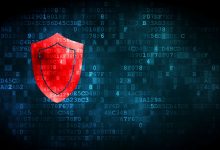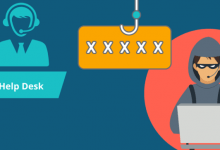Ransomware Prevention: Steps to Safeguard Your Data
Ransomware has become an increasingly common and dangerous threat in recent years. Cybercriminals use this malicious software to infiltrate systems and encrypt valuable data, demanding ransom payments in exchange for its safe return. To avoid falling victim to these attacks and protect sensitive information, it is crucial to implement effective prevention measures. Here are some steps you can take to safeguard your data from ransomware attacks.
1. Regularly update your software:
One of the first and most important steps in ransomware prevention is keeping your software up to date. Software updates often include security patches that address vulnerabilities exploited by cybercriminals. Regularly update your operating systems, applications, and security software to ensure you have the latest protection against emerging threats.
2. Backup your data:
Implementing a strong data backup strategy is essential to mitigate the impact of a ransomware attack. Back up your important files and data regularly and store them offline or in a separate, secure location. This way, even if your systems become compromised, you can restore your data without paying the ransom.
3. Be cautious with email attachments and downloads:
Ransomware often enters systems through infected or malicious email attachments and downloads. Exercise caution when opening email attachments, especially if they come from unknown senders or seem suspicious. Additionally, avoid downloading files or software from untrusted sources, as they may contain malware.
4. Use reliable antivirus software:
Invest in a reputable antivirus software solution and keep it updated. Antivirus software can detect and block known malware and ransomware strains, providing an extra layer of defense against such attacks. It is advisable to enable automatic scanning and real-time protection for continuous monitoring of your system.
5. Enable strong authentication and access controls:
Implementing strong authentication measures such as multi-factor authentication (MFA) can significantly enhance your data security. MFA requires users to provide multiple pieces of evidence to verify their identities before granting access. Additionally, limit user privileges to only what is necessary for their specific roles, reducing the risk of unauthorized access and potential exposure to ransomware.
6. Train employees on cybersecurity best practices:
Human error is often a significant factor in ransomware attacks. Educating and training employees on cybersecurity best practices can empower them to make safer choices when handling data and using company systems. Training should include recognizing phishing emails, avoiding suspicious websites, and understanding the risks associated with downloading and opening unfamiliar files.
7. Develop an incident response plan:
In the event of a ransomware attack, having an incident response plan in place is crucial. This plan should outline the steps to take when a breach occurs, including isolating affected systems, notifying the appropriate authorities, and engaging with cybersecurity experts to help mitigate the damage. Regularly test and update the plan to ensure its effectiveness.
8. Stay informed and proactive:
Stay updated on the latest trends and techniques used by cybercriminals to distribute ransomware. Subscribe to reliable cybersecurity news sources and follow established security organizations. By staying informed, you can proactively implement necessary security measures to prevent ransomware attacks.
In conclusion, protecting your data from ransomware requires a proactive approach that combines technological measures, employee awareness, and a comprehensive incident response plan. By following the steps outlined above, you can significantly reduce the risk of falling victim to ransomware and ensure the safety of your valuable information. Remember, prevention is key in the fight against cyber threats.





all the time i used to read smaller content that also clear their motive, and that is also happening with this article which I am reading here.
Cool